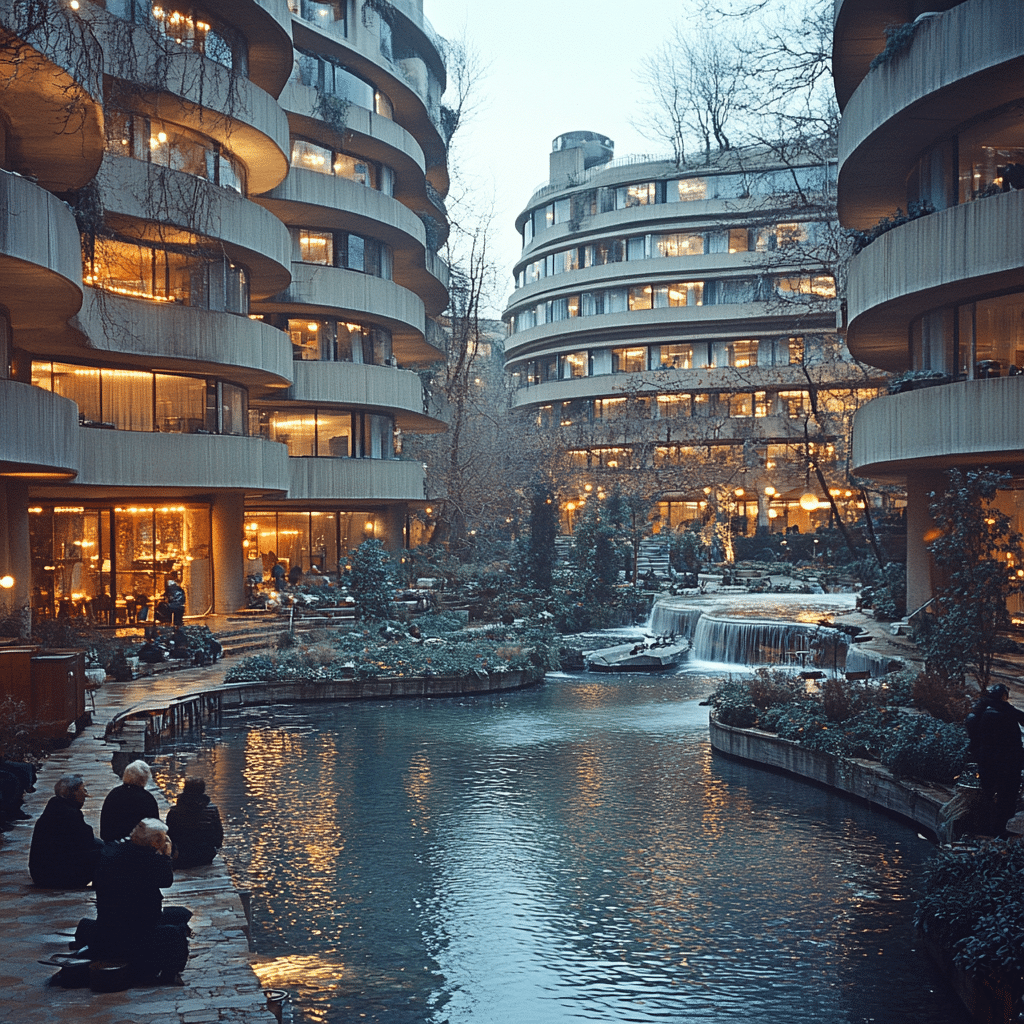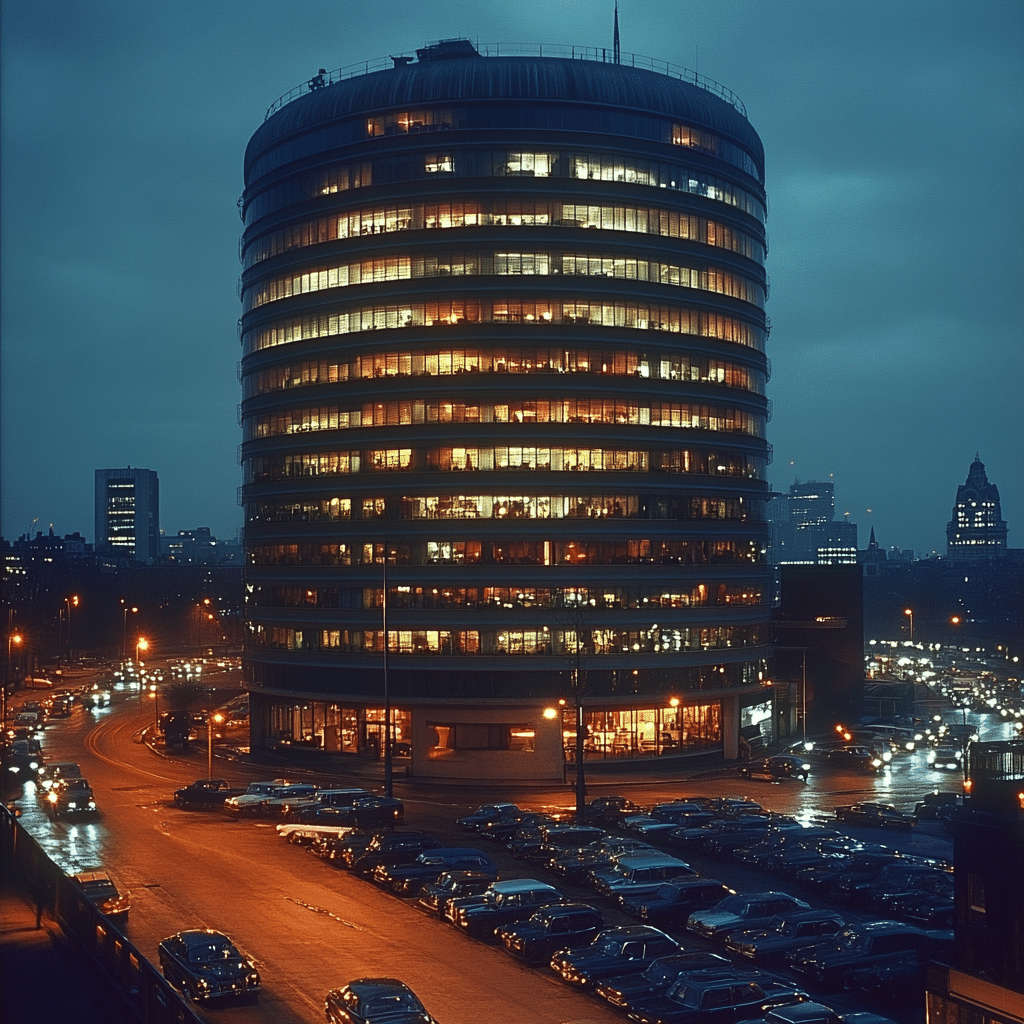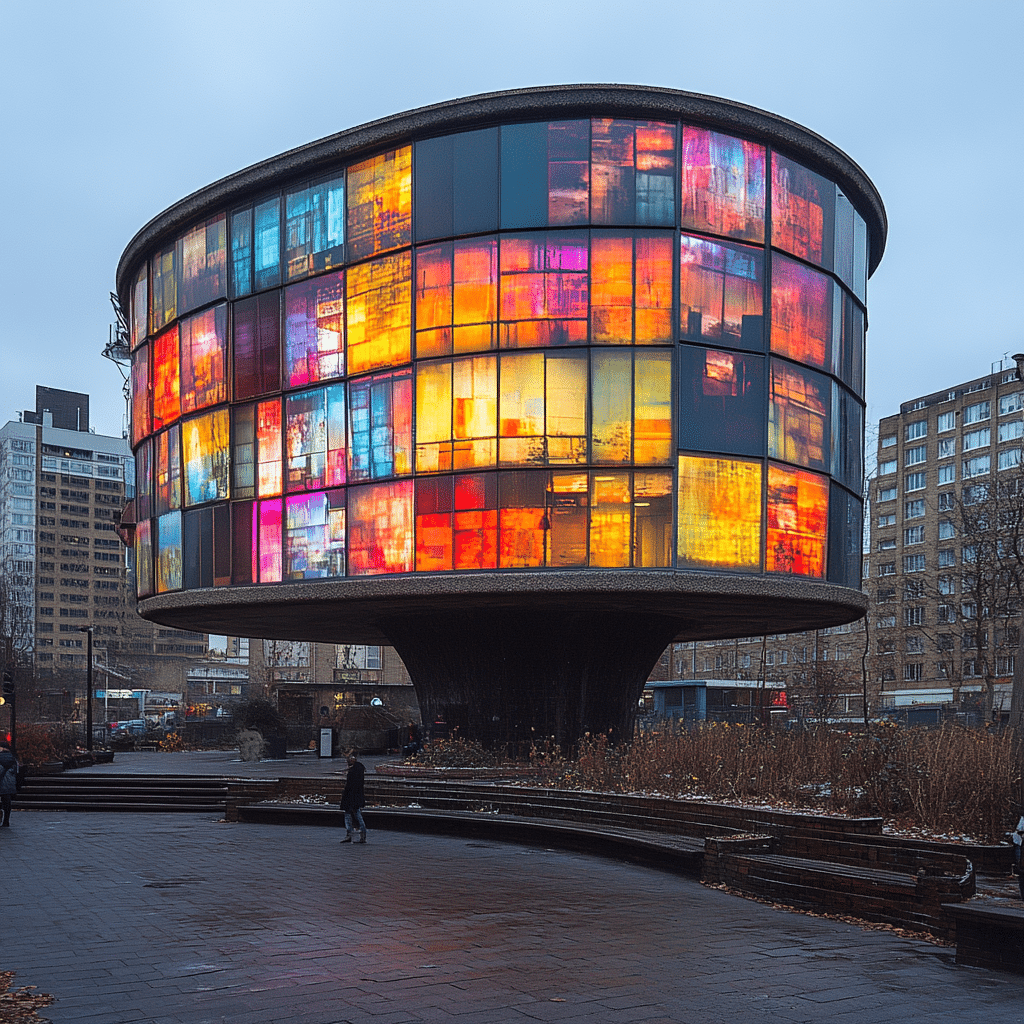The Transformation of the Television Centre: A New Era of Community and Innovation
The iconic Television Centre, once the beating heart of British broadcasting, has undergone a remarkable transformation that reflects shifting societal values and technological advancements. Originally opened in 1960, the Television Centre was a pioneer in media production, but it faced a stark reality as the digital age evolved. In 2012, the BBC made the bold decision to sell the facility for £200 million to developer Stanhope, marking the end of an era. Fast-forward to the present, and what stands now is not just a series of renovated studios, but a vibrant cultural space that proudly caters to the modern community.
This revitalization journey highlights the importance of preserving historical landmarks while adapting to contemporary needs. The Television Centre is now a hub of innovation and creativity, welcoming freelancers, food lovers, and aspiring creators alike. It’s fascinating to witness how a place synonymous with television production has morphed into a center embracing various community-focused initiatives, showing that history and modernity can indeed coexist.
More than simply a physical overhaul, this transformation signifies a broader movement towards communal engagement and creativity in the digital age. The Television Centre stands as a testament to the adaptability of media spaces, proving that they can evolve to meet the ever-changing demands of society. As it opens its doors to local artisans, creatives, and innovators, the Television Centre captures the spirit of collaboration and inclusivity that defines it today.

Top 7 Features of the Revamped Television Centre That Foster Community Spirit
The installation of co-working spaces has been integral to the Television Centre’s transformation. Facilities like Soho Works offer freelancers and budding start-ups a collaborative environment that echoes the communal production spirit once prevalent in television studios. This modern work culture nourishes creativity and innovation, allowing enterprising individuals to develop and share ideas freely.
The Television Centre now opens its doors to numerous cultural events, exhibitions, and pop-up markets that celebrate local talent. Events like the Television Festival showcase thrilling works by emerging filmmakers while hosting panels with industry veterans. Here, the dialogue around modern media practices flourishes, encouraging young creators to learn and connect with established figures in the industry.
Food enthusiasts will find a culinary haven at the Television Centre. Restaurants and cafés, like The Blue Room, spotlight local chefs and sustainable food practices. This not only promotes local businesses but enhances the community’s culinary landscape, allowing people to indulge in delicious meals while networking with fellow food lovers.
The Television Centre offers a wealth of workshops and seminars that target aspiring content creators. Collaborations with institutions such as the London Film School provide hands-on training and mentorship opportunities. These programs bridge the gap between education and industry, ultimately reinforcing the Centre’s commitment to nurturing the next generation of media professionals.
Incorporating open public spaces and gardens has enriched the Television Centre. These additions make it a welcoming environment for families and individuals, encouraging community interaction and well-being. Initiatives like Green Spaces for All reflect a dedication to environmentally sustainable practices while promoting a healthier lifestyle.
The upgraded television production studios at the Television Centre feature cutting-edge technology that encourages experimentation with virtual and augmented reality content. This advancement aligns the Centre with current global trends in the entertainment industry, empowering new artists to explore diverse mediums and creative approaches.
One of the standout features of the Television Centre is its effort to invite local residents to voice their ideas. The Your Television Centre initiative enables people to share their visions through social media campaigns, fostering a sense of ownership among community members. By ensuring the space reflects the community’s needs, the Centre cultivates an atmosphere of partnership and mutual support.
The Role of the Television Centre in Shaping Modern Media Culture
The transformation of the Television Centre is not merely about its physical space; it symbolizes a shift in how media is produced and consumed in today’s society. As global audiences increasingly demand diverse content, the Television Centre has adapted accordingly, focusing on inclusivity and representation. This cultural shift sparks new conversations and opportunities, enriching the creative landscape and making way for underrepresented voices.
This adaptability is key in nurturing a vibrant media environment that resonates with a broad spectrum of viewers. By integrating diverse stories and perspectives, the Television Centre takes on the important role of not just a venue for production but as a leader in pioneering media innovation. As a hub for creativity, it challenges traditional storytelling norms, proving that the contemporary audience is hungry for authenticity and variety in their media consumption.
Furthermore, the Television Centre sets a precedent for other cultural and media institutions around the globe. It highlights that preserving a historical site while embracing contemporary values is possible, ultimately serving as a blueprint for future transformations.

A Legacy of Connection: How the Television Centre Bridges Generations
With its deep-rooted history in British television, the Television Centre serves as a connector between generations. Older viewers fondly remember the iconic programs produced within its walls, while younger content creators find inspiration in its legacy. By hosting events aimed at intergenerational engagement, such as Television Talks, the Television Centre fosters conversations that transcend age barriers, nurturing a shared love for storytelling.
This bridge between the past and present ensures that the Television Centre remains relevant to both new and seasoned audiences alike. The rich heritage within its walls inspires the next wave of storytellers, encouraging them to build on established practices while innovating new techniques and narratives.
As these generations converge, the Television Centre becomes more than just a venue. It morphs into a living history that informs contemporary work while preserving the illustrious traditions of British broadcasting. This interchange solidifies the idea that while times change, the passion for storytelling remains eternal.
Embracing the Future: The Lasting Impact of a Transformed Television Centre
The transformation of the Television Centre illustrates how historical landmarks can evolve while remaining relevant in modern culture. By embracing community and innovation, it’s creating a benchmark for other facilities around the globe. As the Centre continues to foster creativity, collaboration, and cultural appreciation, it stands firm as a reminder of the unifying power of media.
With a future focused on inclusivity and connection, the Television Centre acts as a vibrant collective of stories, experiences, and dreams, paving the way for future creative collaboration. This rejuvenated space is more than a location; it’s emblematic of how heritage can adapt while still honoring its roots—an inspiring journey worth celebrating.
The Television Centre isn’t just an echo of the past; it’s a beacon for what is possible in the future of cultural engagement. With its rich history and dynamic outlook, it continues to hold the promise of fostering community spirit and nurturing the talents of new generations, creating an ever-expanding tapestry of connected narratives that resonate with all.
The Iconic Television Centre: A Blast from the Past
The History of the Television Centre
Did you know that the iconic television centre was opened in 1960? It became a launchpad for countless beloved shows that captured the hearts of viewers worldwide. This famous spot has seen the likes of famous British talents and programs that have left their mark on TV history. For example, Sigrid Valdis, a prominent actress, originally made waves through her work that often pervaded shows during the era. But the centre is more than just nostalgia; it’s a vibrant hub creating new experiences even today.
A Creative Transformation
Fast forward to today, the television centre has undergone a significant transformation. The aim is to revitalize the space, making it accessible for everyone to enjoy. Now, it’s a lively community space offering diverse activities, shops, and eateries. Did you know that weather in Kissimmee can be quite different? It’s a fun way to think about how different areas adapt to their surroundings, just like the television centre adapted to meet modern-day demands. This evolution couldn’t have happened without the creativity and ingenuity of the designers, echoing the talent of folks like Tarek Sharif, who’s known for his fresh approaches.
Fun Facts and Trivia
Here’s a quirky one – the television centre has been a backdrop for countless celebrity moments and iconic performances, reminiscent of Gilbert Arenas’s famous gun incident that stirred up quite the rapport in sports history. The transformation project even draws attention, bringing in visitors and enabling interaction with stories that shaped the media landscape. One can’t help but feel a sense of connection, similar to the whimsical tale of the big mosquito, which is a fun fact to share next time you’re in a conversation about unusual trivia!
So next time you think of the television centre, remember it’s more than a building; it’s a thousand stories woven together, encouraging everyone to soak in its rich legacy and vibrant present. Don’t you just love how a space can adapt and evolve over time?

Does the Television Centre still exist?
The Television Centre still exists but has undergone significant changes, including refurbishment and a shift in use from solely being a BBC hub to hosting premium flats and offices alongside its remaining television studios.
Why did BBC leave the Television Centre?
The BBC decided to leave the Television Centre to save money and became less focused on London, selling the property in 2012 and relocating staff to the redeveloped Broadcasting House and MediaCity in Salford.
Who uses the Television Centre?
The Television Centre is now used by BBC Studioworks for TV production, maintaining three active studios, including the large TC1, while also housing commercial facilities and office space.
Did Itv buy the BBC television centre?
Yes, ITV plc bought the freehold of the Television Centre, now referred to as London Television Centre, in January 2013 for £56 million.
What is filmed at the Television Centre in White City?
At the Television Centre in White City, various TV productions take place, including shows from the BBC’s commercial arm, but specifics can vary as other production companies may also use the space.
Does television City still exist?
Television City, as a name, has evolved, and while the original concept may not exist as it once did, the Television Centre is still operational in a different capacity.
Does the BBC still exist?
The BBC still exists and continues to operate as the UK’s public service broadcaster, providing a wide range of television, radio, and online content.
Which BBC presenters were fired?
The information about which specific BBC presenters were fired can change, but notable restructuring and changes in programming have led to the departure of various on-air personalities over the years.
Where is Sunday Brunch filmed?
Sunday Brunch is filmed at the Television Centre in White City, leveraging its production facilities for the popular cooking and chat show.
Who dominates the TV industry?
The TV industry can be quite competitive, with players like the BBC, ITV, Sky, and others significantly shaping the landscape in the UK, while in the US, networks like NBC, CBS, and ABC dominate.
What happened to the BBC building?
After the sale of the Television Centre, the BBC shifted its operations to other locations, focusing more on modern setups and studios that better fit their evolving production needs.
Who owns TV stations in USA?
Yes, ITV still exists as a major television network in the UK, providing a wide range of programming and producing content for various audiences.
Why did the BBC move out of the Television Centre?
The BBC remains in business, continuing its broadcasting and media services, adapting to changes in technology and audience preferences while maintaining its core mission.
Does ITV still exist?
Central TV, known as Central Independent Television, essentially evolved into ITV Central, which still operates within the ITV framework today.
Is BBC still in business?
Local channels are still in operation across various regions, providing community-focused news and programming to local audiences.
Does Central TV still exist?
The channel called “the own channel” is unclear in context, but various networks and platforms operate in different capacities, so more specifics would be needed for clarity.
Do local channels still exist?
Sunday Brunch is filmed at the Television Centre, utilizing its studios for the lively and popular food show that features guest interviews and cooking demos.



